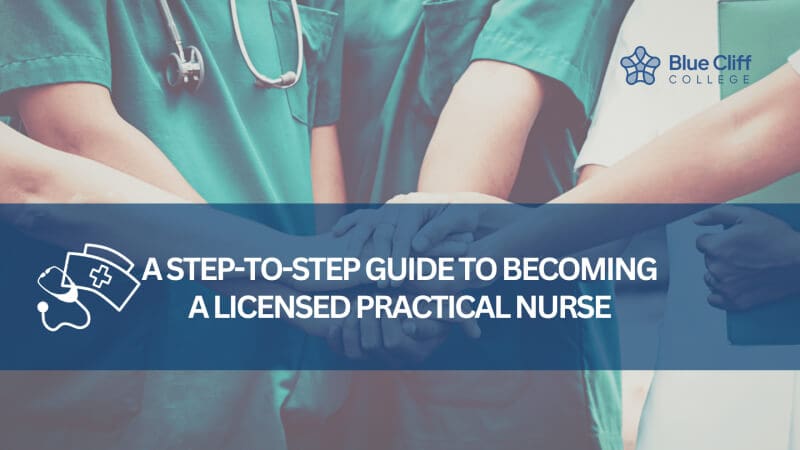Let’s face it — there’s nothing more relaxing than a good massage. Massage therapy is known for its outstanding physical and mental benefits.
Whether you’re interested in a career in the field of massage therapy or simply want to learn more about it, this guide will teach you everything you need to know.
Keep reading to learn more.
What Is Massage Therapy?
Massage therapy is a form of soft tissue muscle manipulation performed by a licensed massage therapist. Your massage therapist will typically apply pressure with their hands and fingers during a massage. However, in some practices, they may use their forearms, elbows, knees, or even their feet.
What Are the Different Types of Massages?
There are a variety of different massage techniques in practice, and each type of massage comes with its own unique benefits. Here are the five main types of massages you could receive from a massage therapist:
1. Swedish Massage
A Swedish massage is a full-body massage and one of the most gentle types of massage you could receive. Your massage therapist will perform both tapping strokes and soft, kneading movements throughout your body. Unlike a deep tissue massage, a Swedish massage will only focus on the upper muscles to improve muscle tension and increase blood circulation.
2. Deep Tissue Massage
During a deep tissue massage, your massage therapist will focus on your deep muscle tissue, applying slow and heavy strokes to your muscles. Deep tissue massages will break up your muscle adhesions, which are commonly referred to as “knots.” Deep tissue massages are great at soothing injuries and muscle strain, decreasing inflammation, improving circulation, and reducing overall stress.
3. Sports Massage
A sports massage is the most popular among athletes. The ultimate goal of a sports massage is to reduce tension in the muscles used in a particular sport. Athletes will often notice an increase in endurance and overall recovery time. A sports massage may also reduce muscle soreness caused by physical exertion. A massage therapist will use a variety of techniques in a sports massage, like stroking, kneading, and tapping. However, when it comes down to it, a sports massage is dependent on the individual’s needs.
4. Trigger Point Massage
A trigger point massage specifically targets “triggers” within your muscles. These trigger points are painful, tight knots found within your muscle tissue. The reason these trigger points are painful is that they block blood flow to an area within your muscles. Your massage therapist will work to increase blood flow and oxygen back into the inflamed area by stretching and applying pressure to the painful targeted areas. Those who receive a trigger point massage claim to notice a significant improvement in their overall pain and range of motion following their session.
5. Chair Massage
A chair massage is a short massage where you will sit in a special massage chair with your head facing downward. From here, your massage therapist will deliver a basic massage, targeting your neck, shoulders, and back. This is the most standard type of massage and you will often find them in shopping malls, airports, gyms, and even in the workplace. Unlock Your Potential and Embrace a Rewarding Career with Our Accredited Massage Therapy Program!
Exploring The Benefits Of Massage Therapy For Arthritis Relief
How Does Massage Therapy Work?
The Science Behind Massage Therapy
- You may be surprised to know that massage therapy has been an ongoing practice in Eastern and Western cultures dating all the way back to 3000 BCE.
- During this time, massage therapy was known as a natural way to improve mental and physical wellness. The benefits of massage therapy aren’t just made-up speculation. In fact, there have been numerous scientific studies for years on end, proving the effectiveness that massage therapy has on the human body.
- According to the National Holistic Institute, over 50 million Americans have decided on massage therapy as a treatment plan with their healthcare provider. This goes to show that massage therapy isn’t just an alternative treatment, but one that has been proven to provide a slew of positive benefits.
- So, what is the scientific reasoning behind the health benefits of massage therapy? Studies have shown that massage therapy reduces arginine vasopressin, leading to lower blood pressure. It also reduces cortisol — the hormone directly caused by stress. This reduction in cortisol leads to an overall calmer and more relaxed state of mind.
- The American Massage Therapy Association also points out how massage therapy can improve your overall immune system. That’s because massage therapy increases lymphocytes, which are the white blood cells in your body. This increase will help fight against cancers and certain types of infections in the long run.
- Another interesting fact about massage therapy is that it is now becoming a better alternative to over-the-counter drugs like Aspirin, Aleve, or Tylenol. This is due to the anti-inflammatory effects that massage therapy has on the body. Therefore, if you are someone with chronic inflammation, massage therapy may aid in your treatment.
- When it comes to mental benefits, massage therapy is known to release feel-good chemicals into the brain, such as serotonin and dopamine. It also relaxes your nervous system, heart rate, and blood pressure.
Benefits of Massage Therapy
Massage therapy not only improves overall health and wellness, it also makes specific improvements in the body that you may not even be aware of. Here are some of the many positive impacts of massage therapy:
- Reduces Stress and Anxiety Stress and anxiety often come from the body. Therefore, since massage therapy lowers your overall cortisol levels, people notice significant improvements in their stress and anxiety levels following a massage therapy session. Likewise, the release of serotonin and dopamine can also regulate the neurotransmitters in your brain, leading to an improvement in overall mood.
- Improves Sleep Due to the relaxing impact massages provide, many people claim to have a better quality of sleep following a massage. Massages also regulate your parasympathetic nervous system, leading to sleepiness and better regulation of your circadian rhythm. If you’re someone who struggles with insomnia or another sleep disorder, a massage may help improve your sleep.
- Lessens Pain and Muscle Tension Massages work to reduce tension and remove waste products in your muscles. This decreases pain and stiffness within your joints. People who frequently get massages claim to notice an improvement in their recovery time, range of motion, and a decrease in pain and tension overall.
- Improves Immune Function Since massages remove toxins and increase white blood cells in your body, your immune system will have a higher level of protection from viruses like the common cold, coronavirus, or the flu. It may also help prevent bacterial infections by helping regulate your lymphatic system.
- Relieves Constipation According to Medical News Today, a 2020 study states that daily massages that focus on the colon can aid in chronic constipation. These types of massages are performed on the abdomen and can be performed by yourself or by a licensed massage therapist.
- Lessen Fibromyalgia Symptoms Fibromyalgia causes chronic muscle pain, tenderness, and fatigue in the body. Since massage therapy is known to improve pain, muscle tension, and produce positive psychological effects, many people with fibromyalgia have reported a noticeable decrease in their symptoms.
- Relieves Cancer Pain Gentle massages are commonly given to patients with certain types of cancers. Not only can they improve pain and inflammation caused by cancer, but the release of feel-good chemicals can also improve anxiety, depression, or stress caused by the disease.
How Massage Helps in Back Pain Relief
Upper and lower back pain is one of the most common reasons why people make a trip to their local massage therapist. Back pain could range from mild stiffness to throwing your back out altogether. Back pain may cause spasms, severe tightness, and limited mobility. Your massage therapist will increase blood flow into the problem areas of your back and work carefully to get you up and moving normally again. The best types of massage for your back depend on the severity of your pain. However, many massage therapists recommend a Swedish massage or trigger point massage.
How Massage Therapy Helps the Digestive System
Massage therapy helps the digestive system by loosening the muscles in the abdomen and intestines. This will regulate the stools that pass through your colon, decreasing constipation or bloating. Massage therapy has even been effective in helping digestive disorders like Crohn’s Disease, IBS, and GERD. Your massage therapist will focus on your abdomen, using firm, circular motions.
Mental Benefits of Massage Therapy
Mental health is just as important as physical health. With that said, many pharmaceutical drugs come with an array of unpleasant side effects, causing people to look for more holistic, alternative approaches — massage therapy being one of them. Since massages release serotonin, dopamine, and endorphins, people who receive regular massages will naturally feel more relaxed and may notice a more elevated mood. The whole process of receiving a massage also promotes peace and tranquility with relaxing music and soothing aromas. While massage therapy may improve overall mood, it should not be relied on as a sole treatment for mental health. Therefore, it’s always important to speak with your healthcare provider about the proper treatment for your individual needs.
Effect on the Neurological System
Massages also regulate your neurological system, including your sympathetic and parasympathetic nervous system. During a massage, your parasympathetic nervous system slows down, leaving your body feeling relaxed and less stressed. While massage therapy may improve overall mood, it should not be relied on as a sole treatment for mental health. Therefore, it’s always important to speak with your healthcare provider about the proper treatment for your individual needs.
How Often Should I Get a Massage?
It is best to receive a massage every three weeks in order to maintain a consistent decrease in pain, tension, and stress. If you are an athlete or frequent gym-goer, you may even wish to receive a massage every two weeks for a shorter recovery time and to lessen overall soreness.
The History And Evolution Of Massage Therapy
Things You Should Not Do After Massage Therapy
It’s important to avoid certain activities following a massage therapy session to ensure you make the most out of your massage.
- First, you should avoid dehydration. Since massage therapy increases hydration within your body, a lack of hydration could get rid of those positive results.
- Next, you should avoid showers for up to one hour after your massage session and to avoid hot water as it could cause tightness and inflammation.
- It’s best to avoid heavy meals or alcohol after your massage as they could cause an increase in inflammation, bloating, and interfere with the detoxifying process.
- Finally, you should avoid heavy lifting or any physical activity that will put more strain on your muscles and joints.
Post-Massage Care: What Is the Best Thing To Do After a Massage?
The best thing to do after a massage is to eat nutritious foods, stay hydrated, and let your muscles relax and recover. It’s also important to keep your stress levels down to maintain the overall feel-good effects of your massage. Yoga and meditation are two good methods to relieve stress.
How Long Do the Benefits Last?
The benefits of a massage usually last up to a week. However, some people will notice a difference for as long as a month. In some cases, results may go away within as little as a day. This is usually the case for athletes or those with injuries and other underlying issues.
Enroll in Our Massage Therapy Program at BCC
Do you wish to expand your knowledge of massage therapy? BCC is a great place to make that dream a reality. By enrolling in our incredible massage therapy program, you can earn your massage therapy license in as little as nine months. Learn more about our program today or contact us with any other questions or inquiries.





